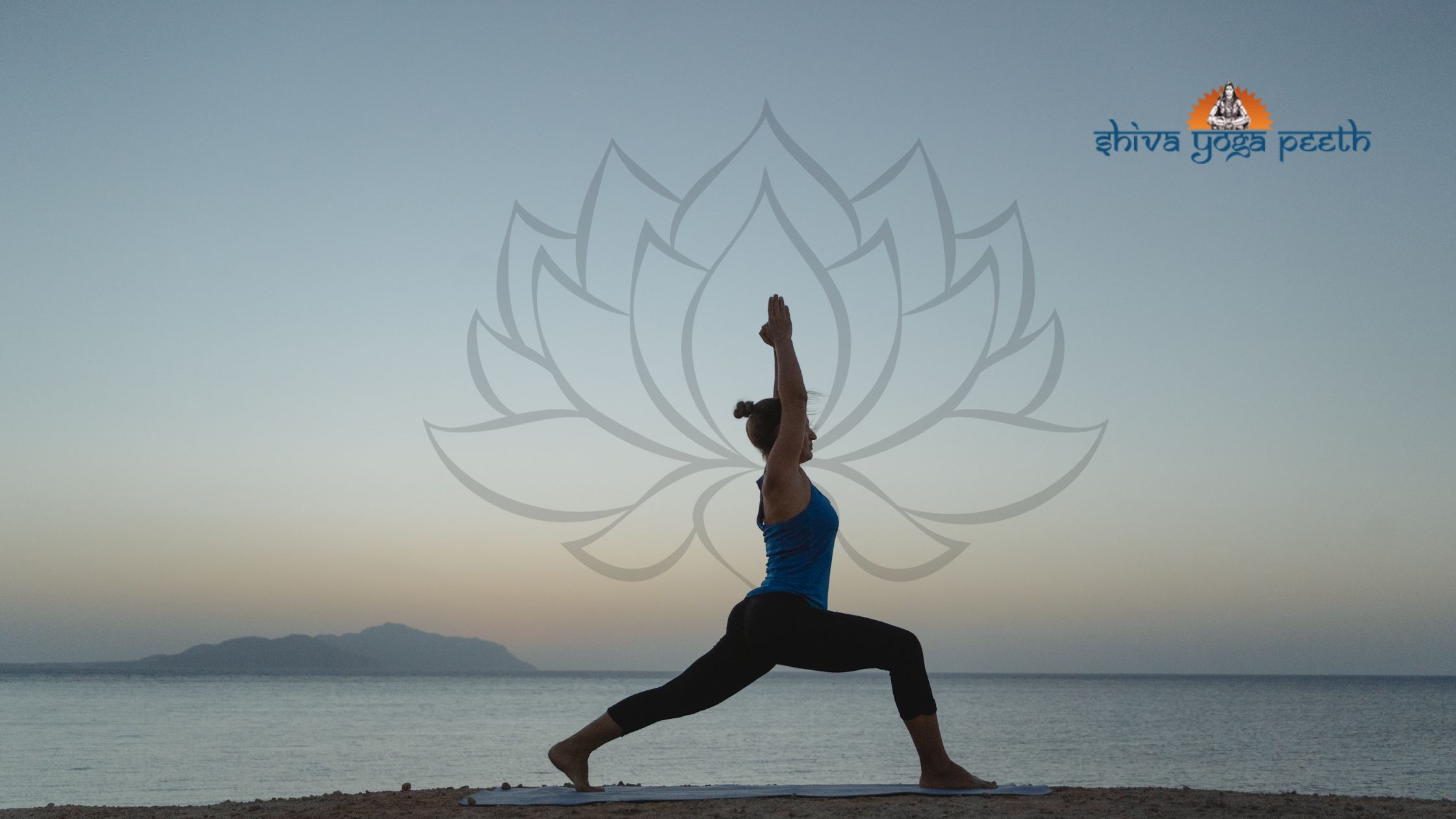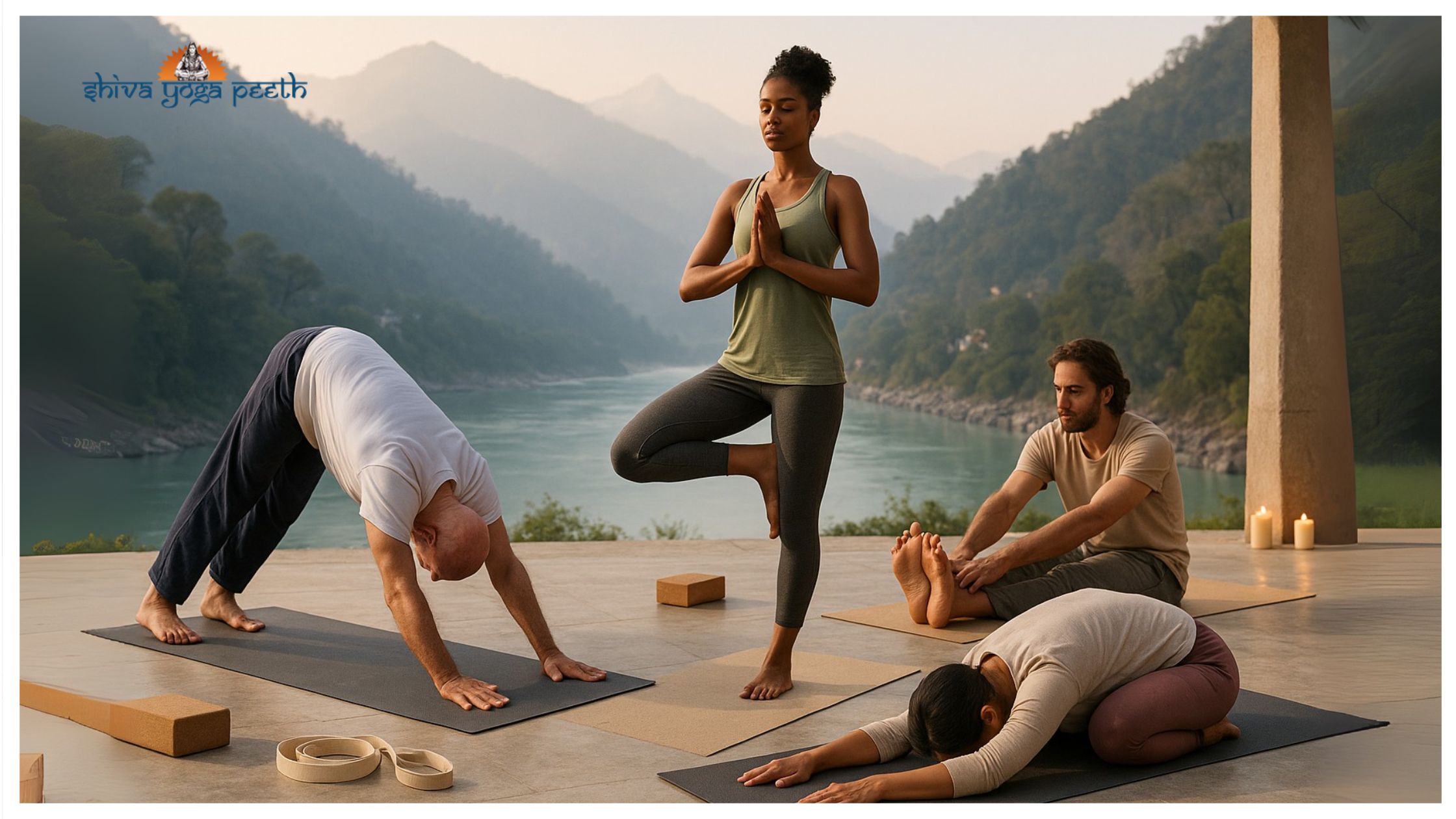It’s not only it’s a physical exercise, it’s an experience of gaining self-awareness and emotional clarity and spiritual alignment. Many practitioners are focused on the order of poses and breathing exercises, and an important and often ignored element is the length of time spent in each posture. What is the optimal time to be in a pose for maximum benefits? This will depend on your goal and experience level, and the kind of yoga that you’re pursuing.
This complete guide from Shiva Yoga Peeth, a top school for Yoga Teacher Training in India, covers the essential information you require about yoga poses and how for optimal exercise and health.
Understanding the Importance of Duration in Yoga Poses
When you practice yoga, the amount of time that you spend in the pose directly affects the results of your workout. The duration of a pose can affect joints, muscles and fascia, as well as energy flow, mental concentration, and much more.
If you’re doing yoga to improve your endurance, flexibility or peace of mind, knowing how long you can remain in a posture can boost your progress and decrease the chance of sustaining injury.
Factors That Affect How Long You Should Hold a Pose

Style of Yoga
- When practicing Vinyasa Yoga, poses are kept for a shorter time (5-10 minutes) in order to ensure flow and improve breath coordination.
- When practicing Hatha Yoga, poses may be kept for up to 2 and 3 minutes in order to facilitate breathing and alignment.
- Yin Yoga involves holding poses for between 2 and 5 minutes (or longer) to focus on the deeper connective tissue.
Experience Level
- Beginning users may require fewer holds to increase their strength and comprehension.
- Advanced and intermediate students can extend their poses to increase the advantages.
Type of Yoga Pose
- Stand poses such as Warrior II can be held for 30 seconds in order to increase endurance.
- Yoga poses such as Child’s Pose may be held for a number of minutes to promote peace.
- Backbends and inversions can need shorter holds at first due to the level of intensity.
Purpose of Yoga Practice
- If you aim to strengthen your muscles, do the poses for between 30 and 60 minutes.
- If you are looking to increase your flexibility, you should hold for just 1-3 minutes.
- To improve mental clarity and meditation effects, three to five minutes of holds can be beneficial.

Recommended Time Frames for Common Yoga Poses
| Yoga Pose | Purpose | Recommended Duration |
| Downward Dog | Strength & Stretch | Within 1-2 minutes |
| Warrior II | Build Endurance | 30-60 seconds |
| Tree Pose | Improve Balance | 30-60 seconds |
| Seated Forward Fold | Increase Flexibility | 1 – 3 minutes |
| Cobra Pose | Spinal Flexibility & Strength | 15-30 seconds |
| Legs Up the Wall | Relaxation & Recovery | 5-10 mins |
| Child’s Pose | Restorative & Calm | 2-5 minutes |
Physical & Mental Benefits of Yoga Through Longer Holds
Yoga poses that are held longer for longer times offer numerous advantages of yoga that go beyond the physical.
1. Improved Flexibility
Stretches that are gentle and sustained help to lengthen muscles and fascia. They also increase the range of motion as time passes.
2. Increased Strength and Endurance
Isometric contraction (holding with no movement) increases the muscle’s control, endurance and stabilization.
3. Enhanced Focus and Patience
Staying in a demanding pose helps to develop mental discipline, focus, as well as awareness of the present moment.
4. Deeper Mind-Body Connection
As time passes, your nervous system starts to relax and allows the body to be able to feel subtle feelings and the flow of energy.
5. Stress Relief and Emotional Balance
The longer holds of calming poses trigger the parasympathetic nerve system to reduce anxiety and stress.

Why Duration Matters in Yoga Teacher Training
If you’re on the road to becoming a yoga teacher certified knowing the duration of a pose is essential. In Shiva Yoga Peeth, we offer a Yoga Teacher Course in India that is more than just posture alignment. We insist on the timing of every asana, based on ancient yogic concepts and the latest anatomy.
Our courses explore:
- The research behind muscle tension and the release of fascia
- How breath influences pose duration
- Techniques for sequencing that are properly timed
- Modifications to different levels of student
When you can help students with different types of holds depending on their specific demands, you’ve truly captured the characteristics of a skilled and patient yoga instructor.
Listening to Your Body
The primary aspect of finding out how long you can remain in a pose is tuning into your body. Do not push into discomfort or pain.
Follow these signs:
- Mild Sensation: Remain and take a deep breath. It is here that transformation takes place.
- Acute Pain or Numbness: Let the pose go with a gentle exhale.
- Muscles that shake: Signs of strength building; keep in case you can manage it.
- Mindful Resistance: Be aware of it and then work through it with consciousness.
Yoga helps us balance efforts and comfort (Sthira the sukham asanam, the Patanjali Yoga Sutra). There’s not a “perfect time” that fits everybody; each person’s journey is unique.
Tips for Holding Yoga Poses Longer
- Utilize props: Utilize props like blocks and straps, bolsters, and walls to allow you to stay longer by providing support.
- Take deep breaths: count breaths rather than seconds. Five to 10 deep breaths are an ideal reference point.
- Keep Focused: Pay attention to the breath, body movements or even an affirmation.
- Build Gradually: increase the number of times you hold each week.
- Rest when needed: Add breaks and rest to avoid the risk of injury or fatigue.
Conclusion: The Journey Within
How long the pose is held will dramatically alter your experience. It doesn’t matter if you’re practicing yoga for physical health, emotional healing, or to awaken your spirituality it’s all about an intentional approach to practice. When you practice poses mindfully, it allows you to reap the greater benefits of yoga, which extend beyond the fitness aspect or flexibility.
At Shiva Yoga Peeth, we believe in empowering each practitioner, whether beginner or aspiring teacher, to explore yoga with depth and compassion. The holistic way we approach Yoga Teacher Training in India provides detailed instructions on posture time, mindfulness breathing, as well as the yoga philosophy that connects mind, body, and spirit.
Ready to Deepen Your Practice?
If you’re an avid yoga practitioner and would like to assist others along their journey, it’s the perfect time to be an instructor certified in yoga. Take a trip to Shiva Yoga Peeth for internationally recognized training in Rishikesh, which is the centre of yoga. Learn not only how to do a yoga pose, but also how to maintain space for others and yourself.

